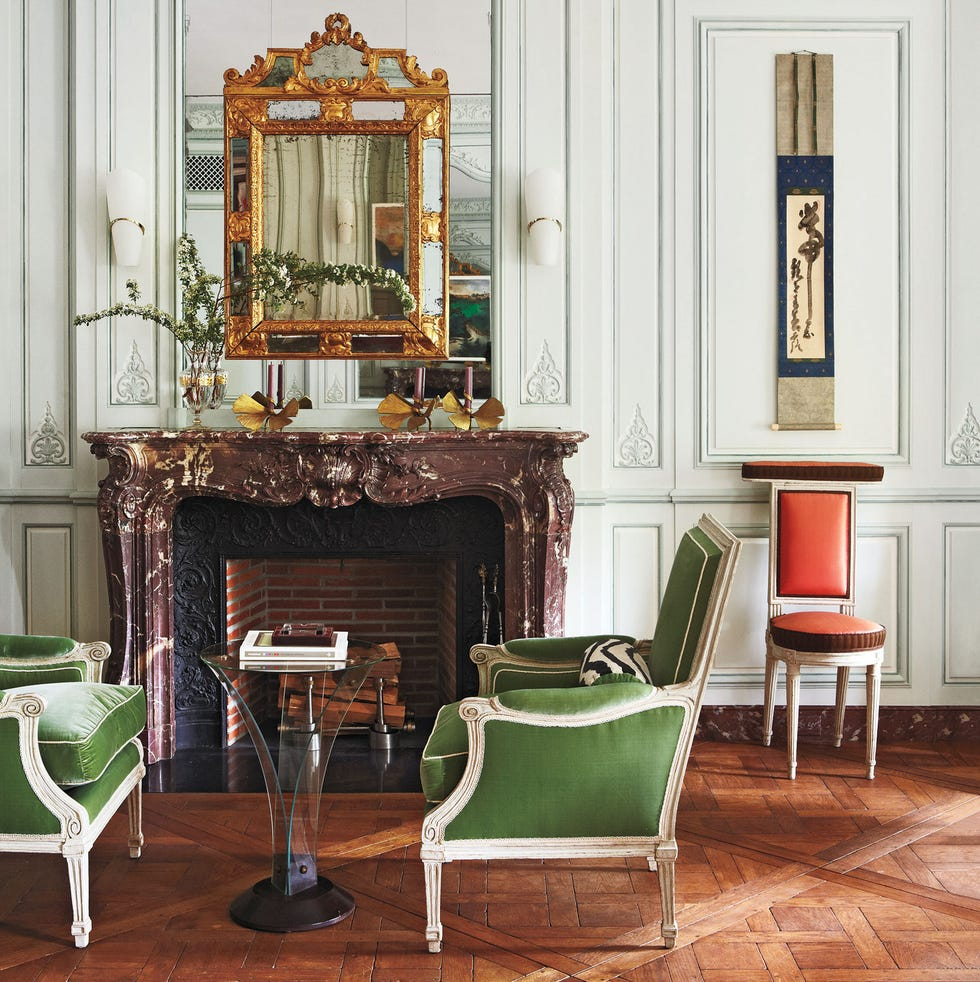
The financier’s wife wanted French—very French. She and her husband had given up their Park Avenue prewar duplex in order to move to a vast, majestic apartment on Fifth Avenue. The old place had been done in fine traditional style years before, but the couple now wanted something extraordinary, a home that would work, the financier explained, “with our evolving lifestyle”—which meant lots of parties and dinners, and time with their children.
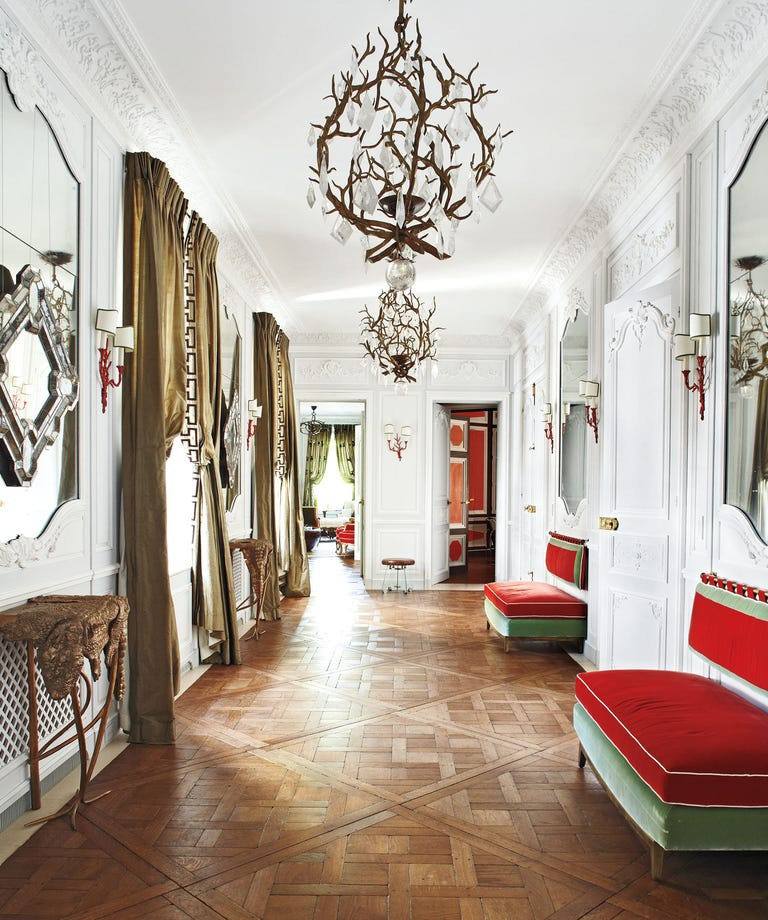
The entrance hall features bronze-and-crystal light fixtures by Hervé Van der Straeten and custom-made benches upholstered in a Prelle velvet; the silk curtains are custom embroidered. The boiseries and wall moldings throughout the apartment are by Féau & Cie, and the flooring is Versailles parquet.
But to say that the nearly 9,000-square-foot apartment needed some work was like saying that Central Park, which lies outside the home’s windows, requires a bit of gardening. Housed in a 1920 building where apartments rarely change hands, the place hadn’t been touched since the 1970s. It contained dark paneling and dreary finishes. And while it had huge rooms, several of them more than 30 feet wide, the ceilings weren’t particularly high. So creating intimacy was a challenge.
“We stripped it bare,” says Robert Couturier. “It was a blank canvas.” Couturier, an ELLE DECOR A-List Titan, is the architect and designer people call, no matter where they live, when they have virtually unlimited means and want a home with aesthetic integrity and a sense of European history.
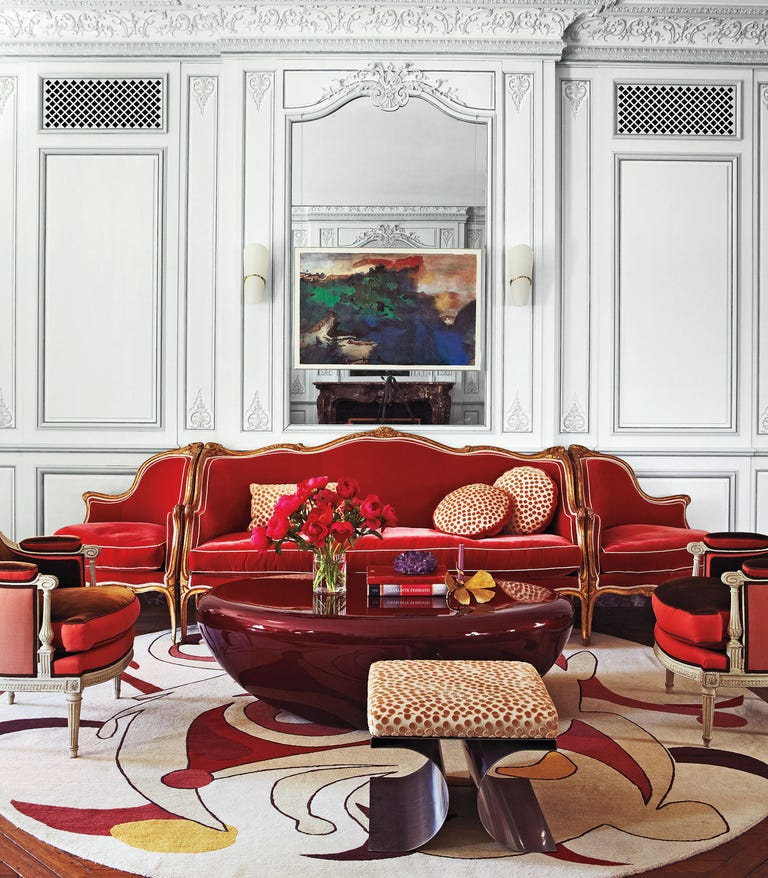
In the living room, the canapé à confident is Louis XV, and the bergères are Louis XVI. The cocktail table is by Mattia Bonetti, the stool is by Michel Boyer, the sconces are 1950s Italian, and the rug is by Diurne.
Early on, Couturier took the clients to Paris, where the designer had grown up in an aristocratic Jewish family with “a very deep sense of culture,” he says. He wanted to show the wife “what ‘French’ really means.” To that end, he led the couple to the Musée des Arts Decoratifs and the Louvre. But their most revelatory visit was to the museum that was once the home of Moïse de Camondo. The belle epoque banker’s collection of 18th-century furniture and objets d’art is preserved in the mansion he partly modeled on the Petit Trianon in Versailles. (Couturier studied at the design school established in the home after Camondo’s death in 1935.) “Seeing it with Robert,” recalls the wife, “made me realize how you can hold on to the past and still move forward.”
Tour This Lavishly French Manhattan Apartment by Robert Couturier
Couturier also took them to Féau & Cie, the venerable curator and fabricator of boiseries and the kind of plaster paneling that distinguishes many 18th-century interiors. That visit helped the couple decide to cover many of the walls of their New York apartment in elaborate paneling of wood and plaster and to paint them in subtle variations of white. With the floors, made from Versailles parquet, this created a highly detailed but neutral background for their lushly upholstered and boldly colored furnishings. The effect is dazzling. There are plenty of Régence and rococo pieces, but everything is done with such a light hand that the space feels unexpectedly airy.
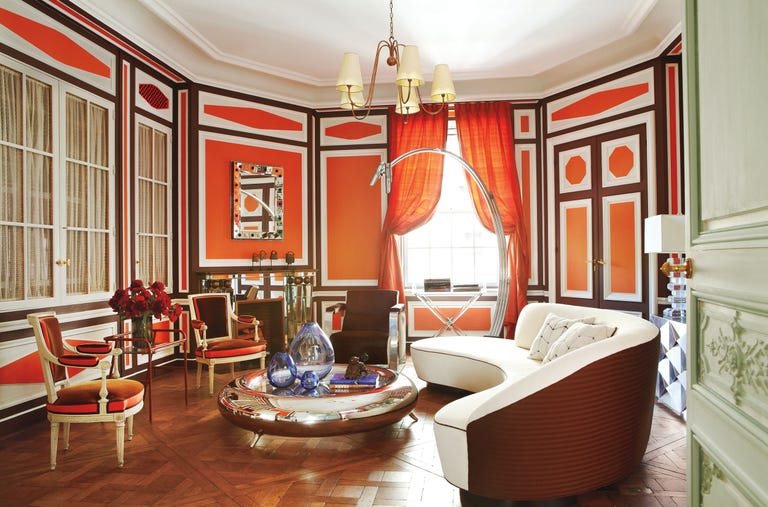
In the study, a Ring cocktail table by Garouste & Bonetti is surrounded by a pair of painted-wood Louis XVI chairs upholstered in silk velvet, a Felix Aublet armchair upholstered in cowhide from Edelman Leather, a 1980s floor lamp by Studio Tetrarch, and a sofa covered in a Chapas Textiles mohair bouclé. The Jean Royère chandelier is from the ’50s, and the curtains are of a Clarence House silk.
The wife was adamant that colored wall surfaces be used to form a contrast with the subtle shadings of the paneling. “I wanted the colors to be pure,” she says. “No muted taupe variations.” She oversaw the pigments, mixed by Féau’s craftsmen. Now her office is “very Dior, lots of gray and pink,” she says, and the study is a handsome Hermès orange.
“You can’t get stuck in a period. You have to know inside what is really good about things.”
Couturier took them on a second visit to Paris, to shop for furniture, much of it from the 18th century, that would be a natural fit with the few pieces they were bringing from their previous residence. “By then the ideas were really strong, and they had gained confidence,” he says. Their new purchases, including many chairs and cabinets with a pedigree, are boldly mixed with modern furniture and lighting, a mélange that is Couturier’s forte. (The designer is a fan of midcentury French talents such as Jacques Adnet and Jean-Michel Frank, as well as contemporary designers like Hervé Van der Straeten.) “You can’t get stuck in a period,” he says. “You have to know inside what is really good about things, and what unifies them in a deep way.”
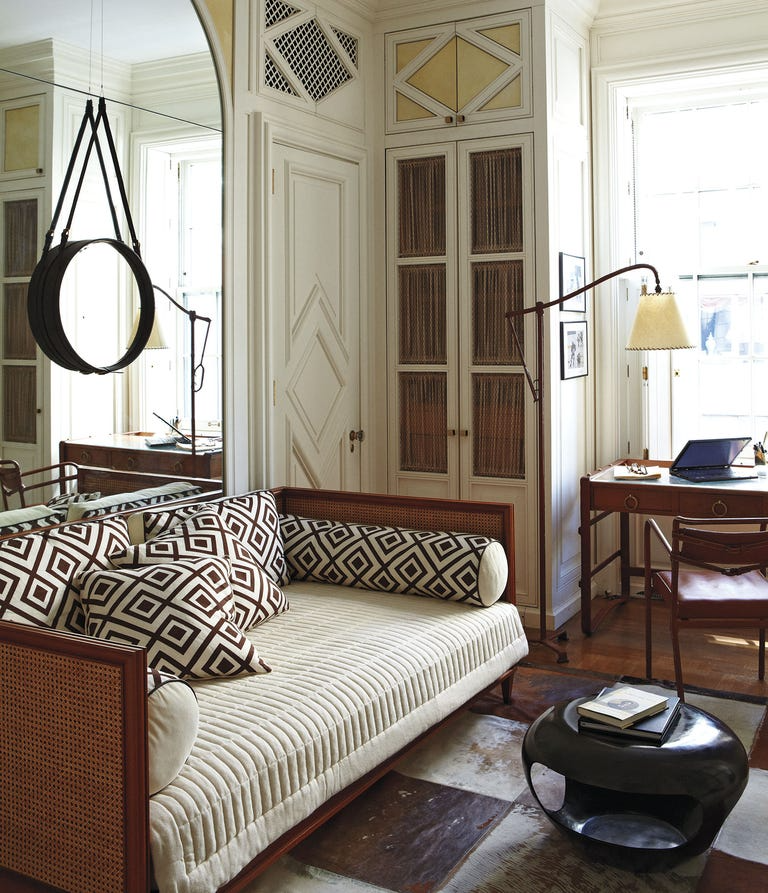
In the husband’s dressing room, a custom-made sofa is upholstered in a Lee Jofa fabric and dressed with a Pratesi quilt. The cocktail table is by Hervé Van der Straeten, and the chair, floor lamp, and ’40s desk are all by Jacques Adnet.
The challenge was to create intimate and flexible spaces that flowed, says the wife. “We didn’t want the usual place, with a few sofas around a central cocktail table. We wanted to be able to change the layout to suit the different events in our lives.” The living room has several seating areas that can be moved and reconfigured, including one dominated by a Louis XV canapé à confident and a Mattia Bonetti cocktail table. The spare dining room, with its two stainless steel tables by Ron Arad, can accommodate large sit-down dinners as well as casual gatherings.
“In many ways, the apartment is essentially French, without any kind of cliché and without being mired in the past,” says Couturier. “And that is the definition of good design.”